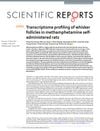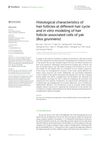herb and oil with stimulant, circulatory, anti-inflammatory and antioxidant properties
signaling protein that, when suppressed, may grow hair by reducing inflammation and stem cell loss
a copper peptide showing promise in both regrowth and reversing gray hair
a natural and far less effective alternative to Finasteride



